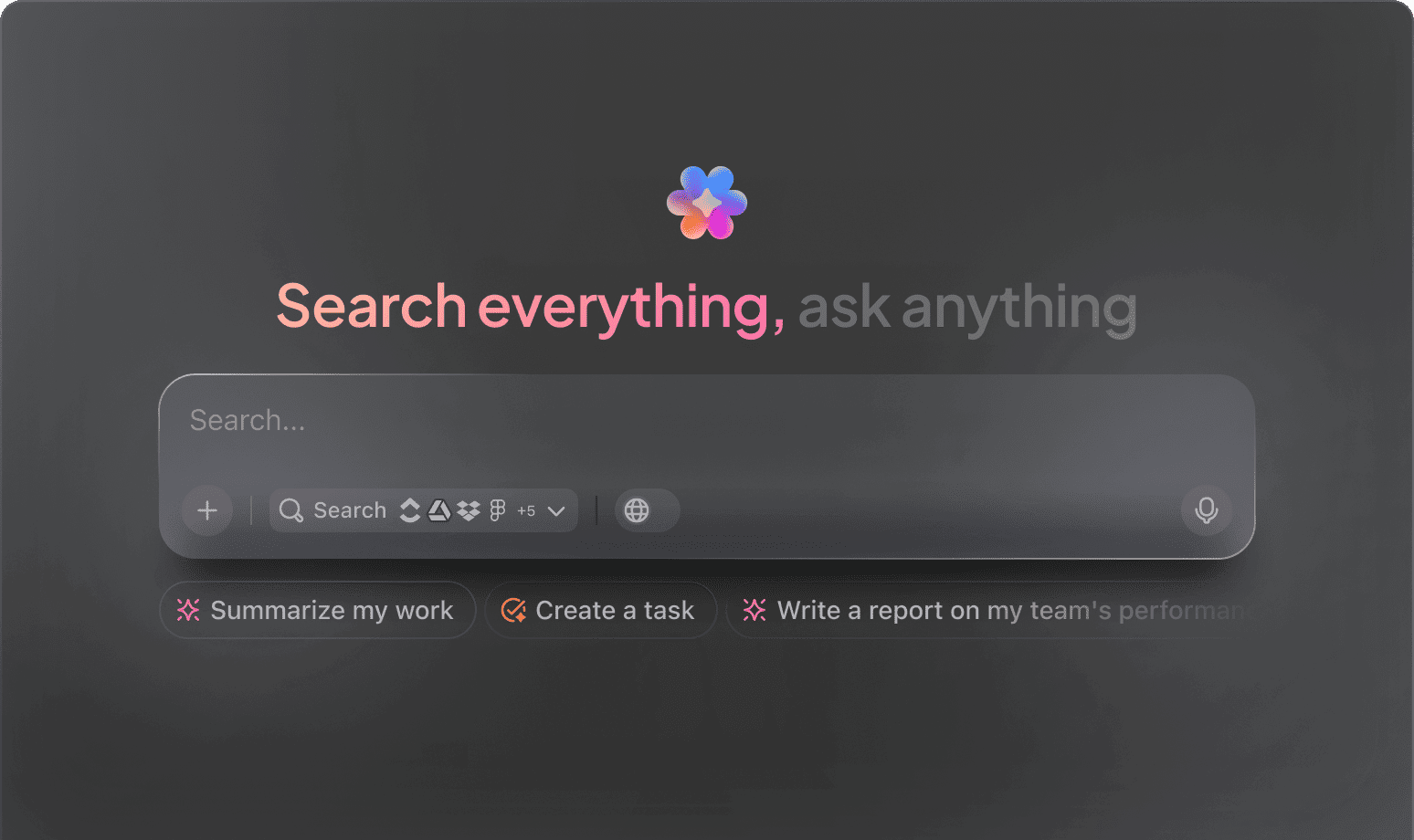AI Tools for Qualitative Research
Top AI Prompts for Qualitative Research with ClickUp Brain
Unlock deeper insights, organize complex data, and elevate your research process effortlessly using ClickUp Brain.
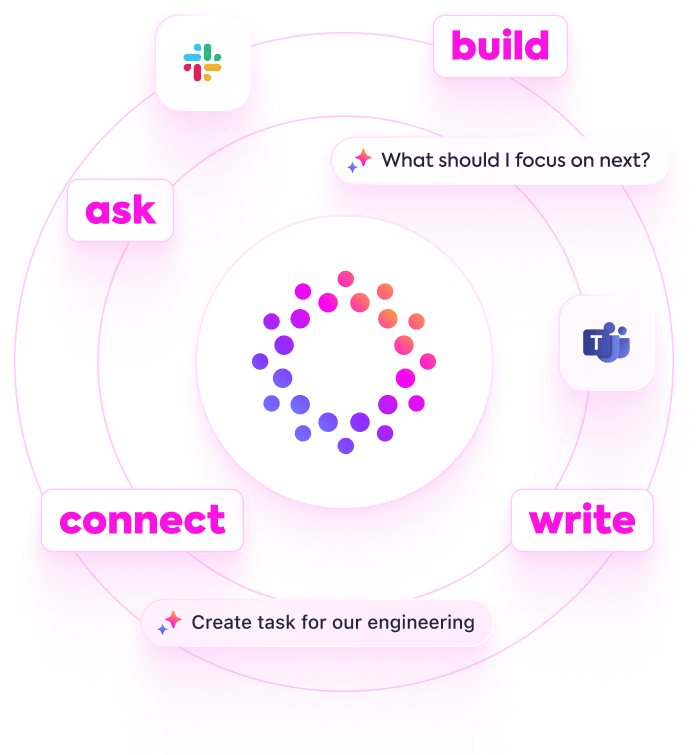
Trusted by the world’s leading businesses
AI Empowering Qualitative Insights
Revolutionizing Qualitative Research with AI-Driven Prompts
Uncovering deep human insights isn’t just about gathering data—it’s about making sense of complex narratives.
From interview transcription to thematic coding, participant observation, and report drafting, qualitative research demands meticulous attention to detail across many stages—and countless notes, memos, and revisions. That’s where AI prompts become invaluable.
Research teams now leverage AI to:
- Quickly identify emerging themes and patterns from transcripts
- Generate interview guides and probe questions with ease
- Summarize lengthy participant responses into concise insights
- Transform raw field notes into structured frameworks, coding schemes, or action items
Integrated into familiar tools—such as documents, whiteboards, and project trackers—AI in platforms like ClickUp Brain moves beyond simple assistance. It actively shapes qualitative data into clear, manageable workflows that drive meaningful analysis and outcomes.
Comparing ClickUp Brain with Conventional AI
Why ClickUp Brain Stands Out
Integrated, context-driven, and instantly accessible—ClickUp Brain lets you focus on insights, not explanations.
Conventional AI Solutions
- Constantly toggling between apps to collect background
- Repeating your research objectives in every query
- Receiving generic, irrelevant feedback
- Hunting through multiple platforms for a single document
- Interacting with AI that lacks initiative
- Manually switching between different AI engines
- Merely another add-on without deep integration
ClickUp Brain
- Deeply connected to your research projects, notes, and team discussions
- Retains your study context and objectives over time
- Provides insightful, context-aware guidance
- Searches seamlessly across all your research assets
- Supports hands-free input with voice commands
- Automatically selects the optimal AI model: GPT, Claude, Gemini
- Available as a native Mac & Windows app designed for efficiency
Prompts for Qualitative Research
15 Essential AI Prompts for Qualitative Research (Optimized with ClickUp Brain)
Enhance your qualitative studies—data interpretation, theme discovery, and reporting simplified.

Identify 5 emerging themes from the ‘Spring 2025 Interview Transcripts’ document.
Use Case: Accelerates thematic analysis by leveraging existing qualitative data.
ClickUp Brain Behaviour: Extracts and summarizes recurring themes and participant insights from the linked transcripts.

What participant sentiments are most common in focus groups discussing sub-$25K electric vehicles in North America?
Use Case: Supports understanding of consumer attitudes to guide research focus.
ClickUp Brain Behaviour: Analyzes internal focus group notes; Brain Max can supplement with relevant external sentiment data if available.

Draft a research brief for a study on minimalist dashboard usability inspired by Scandinavian design principles. Reference ‘User Feedback #8’ and prior interview notes.
Use Case: Aligns research teams with clear objectives and context.
ClickUp Brain Behaviour: Compiles key points and participant feedback from linked documents into a structured brief.

Summarize comparative findings on driver satisfaction between Tesla Model Y and VW ID.4 from the ‘Satisfaction Q2’ report.
Use Case: Facilitates quick understanding of comparative user experience data.
ClickUp Brain Behaviour: Extracts and condenses quantitative and qualitative data from internal reports into a concise summary.

List predominant coping strategies identified in high-performance EV user interviews, referencing R&D notes and supplier feedback.
Use Case: Helps identify user behavior patterns relevant to product development.
ClickUp Brain Behavior: Scans documents to highlight recurring strategies and associated user comments.

From the ‘Steering System Validation’ interview transcripts, generate a checklist of user concerns and testing priorities.
Use Case: Streamlines preparation for usability testing by organizing key points.
ClickUp Brain Behavior: Extracts and formats participant feedback into a task-ready checklist.

Summarize 3 emerging interaction trends in infotainment UX from post-2024 user studies and technology reviews.
Use Case: Keeps design teams informed on evolving user preferences.
ClickUp Brain Behavior: Identifies patterns and repeated observations from linked qualitative research documents.

From the ‘Gen Z UX Survey Q1’ document, summarize key preferences for in-car app interfaces.
Use Case: Guides UX teams to tailor infotainment features to younger demographics.
ClickUp Brain Behavior: Analyzes survey data to highlight common themes and user expectations.

Compose concise and engaging UX copy for the eco-mode toggle screen, using the tone guidelines in ‘ProductTone.pdf.’
Use Case: Accelerates UI text creation while maintaining brand voice.
ClickUp Brain Behavior: Draws on tone references to suggest copy variations suited for the interface.

Summarize key updates in EU 2025 pedestrian safety regulations and their implications for fascia design.
Use Case: Ensures design compliance with evolving safety standards.
ClickUp Brain Behavior: Condenses linked compliance documents; Brain Max can incorporate public updates if available.

Generate placement and dimension guidelines for EV charging indicators, referencing India-specific compliance documents in our workspace.
Use Case: Guarantees adherence to regional regulatory requirements.
ClickUp Brain Behavior: Extracts relevant measurements and positioning rules from internal files to create a compliance checklist.

Create a checklist for frontal crash-test criteria using US NCAP 2025 PDFs and chassis design documentation.
Use Case: Supports QA teams in verifying safety design elements.
ClickUp Brain Behavior: Identifies and organizes test requirements from PDFs into actionable tasks grouped by test area.

Compare sustainability features like recycled materials in interiors across Tesla, Lucid, and Rivian using competitive analysis documents.
Use Case: Informs design innovation through benchmarking.
ClickUp Brain Behavior: Summarizes comparative data into clear, accessible formats such as tables or briefs.

What interior design trends are emerging in autonomous vehicles since 2023?
Use Case: Provides R&D teams with insights on evolving user needs.
ClickUp Brain Behavior: Synthesizes trends from research notes, concept summaries, and uploaded reports.

Summarize key cabin usability challenges from Southeast Asia EV user feedback (materials, layout, interactions).
Use Case: Drives targeted improvements based on regional user insights.
ClickUp Brain Behavior: Extracts and prioritizes issues from surveys, feedback notes, and tagged tickets.
Innovate Your Research Process with ClickUp Brain
Cut down redundant tasks, unify your team’s insights, and produce richer qualitative findings through AI-enhanced workflows.





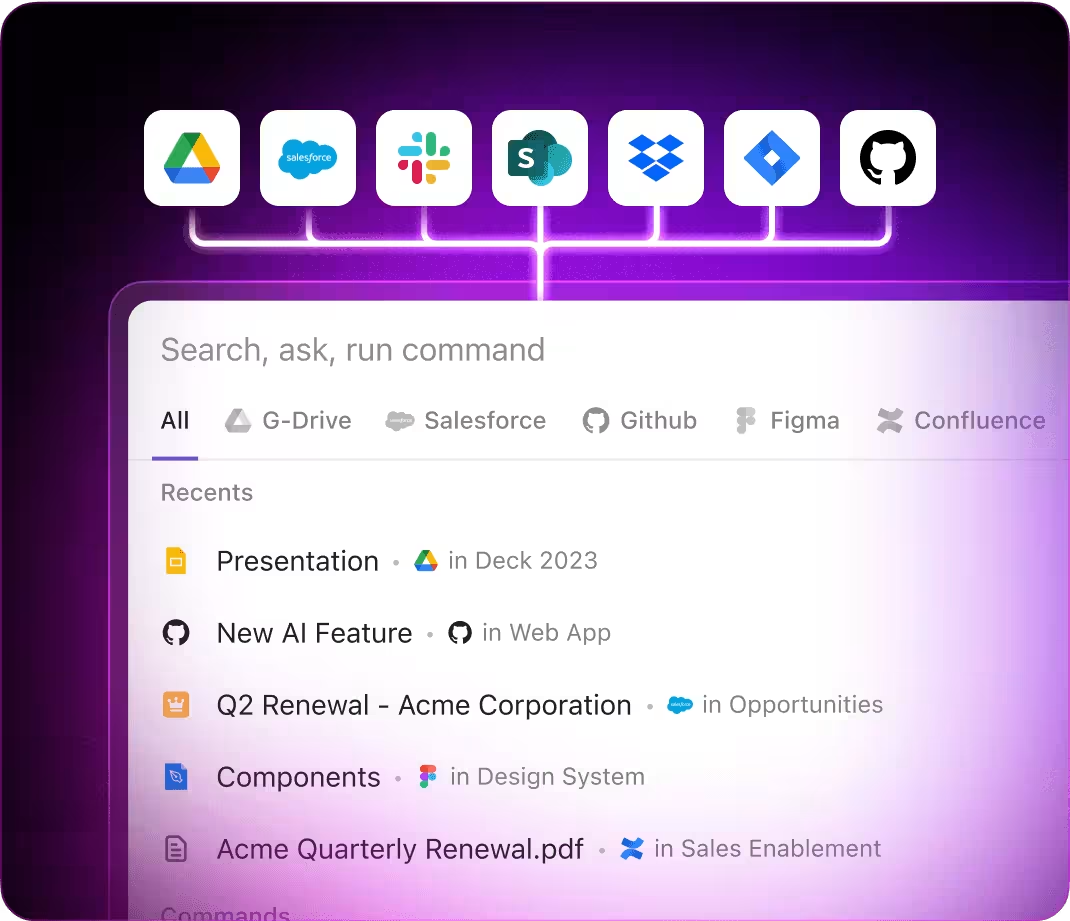
AI Applications
Leading 3 Applications of AI Prompts in Qualitative Research with ClickUp Brain
Speed up insights, enhance data depth, and discover meaningful patterns through AI-powered qualitative analysis with ClickUp Brain
From Raw Notes to Research Reports
Initial qualitative research often starts with fragmented observations and unorganized memos. ClickUp Brain converts these into clear, collaborative research summaries—right within ClickUp Docs.
Leverage ClickUp Brain to:
- Transform scattered interview notes into structured analysis templates
- Develop fresh insights by referencing previous study contexts (through context-sensitive AI assistance)
- With Brain Max, instantly explore past research findings, participant feedback, and field notes to inspire your next discovery.
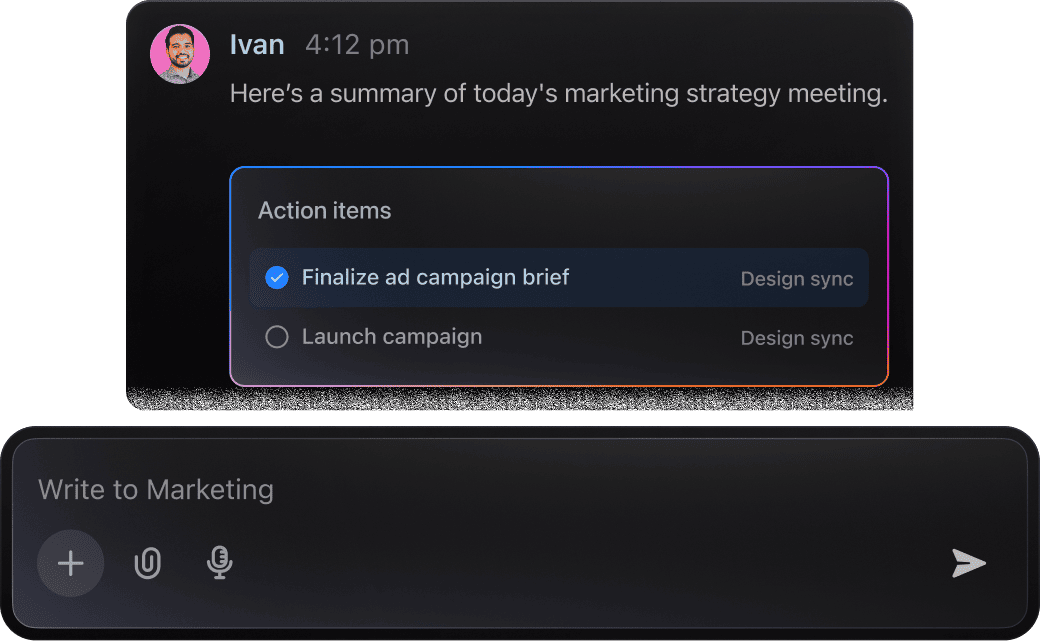
From Insights to Implementation
Qualitative researchers manage extensive interview transcripts and observation logs. ClickUp Brain assists by pinpointing key themes, highlighting concerns, and creating next-step tasks from your data.
Leverage ClickUp Brain to:
- Condense lengthy qualitative data into clear summaries
- Convert coded notes into actionable research tasks
- Generate participant feedback reports or study briefs effortlessly
- With Brain Max, instantly retrieve past findings, thematic patterns, or project discussions across your workspace—eliminating tedious manual searches.
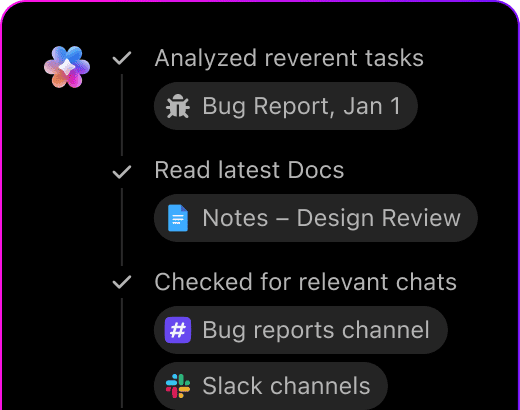
Qualitative Research with ClickUp Brain
Conducting in-depth interviews and focus groups involves managing vast amounts of nuanced data and participant feedback. ClickUp Brain simplifies this complexity—extracting key themes and crafting clear, consistent research summaries.
Leverage ClickUp Brain to:
- Analyze interview transcripts for meaningful patterns
- Create concise reports that reflect participant voices accurately
- Convert observational notes into prioritized action items
- Brain Max enhances this by linking insights from past studies or related projects, supporting comprehensive longitudinal analysis.
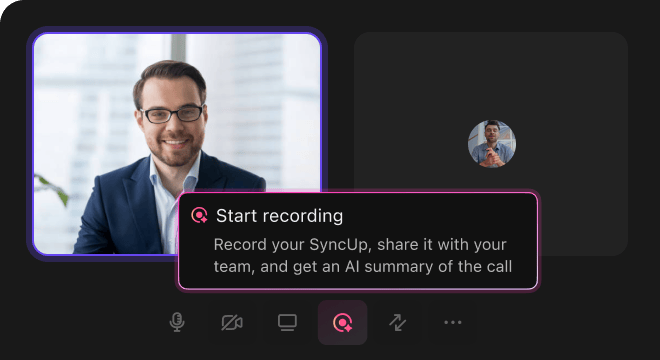
AI Advantages
How AI Prompts Revolutionize Qualitative Research Processes
Integrating AI prompt workflows enhances every phase of your qualitative research:
- Accelerate insights: Quickly transform raw data into themes, codes, and summaries
- Reduce errors: Detect inconsistencies by cross-referencing interview transcripts and notes
- Align your team: AI-crafted reports and summaries keep everyone informed and engaged
- Make informed choices: Generate prompts for competitor analysis and compliance checks
- Innovate research methods: Uncover fresh perspectives beyond traditional frameworks.
All these capabilities are embedded within ClickUp, turning your AI-generated content into actionable docs, tasks, and dashboards that drive your research projects forward.
Prompt Guidance
Crafting Effective Prompts for Qualitative Research
Clear prompts unlock deeper insights.

Define the research context clearly
Vague prompts yield shallow findings. Specify details like participant demographics (e.g., “urban millennials”), research focus (e.g., “user experience with mobile apps”), or study setting (e.g., “remote interviews”).
Example: “Outline interview questions exploring remote work challenges for tech freelancers.”

Use comparative prompts to uncover contrasts
AI excels at drawing distinctions between concepts. Frame prompts as comparisons to evaluate themes, contrast user feedback, or differentiate study methods.
Example: “Compare emotional responses to brand A versus brand B in customer interviews.”

Structure prompts around research objectives
Think of your prompt as a clear task aimed at specific insights. Instead of broad requests, focus on what you want to learn:
Example: “Develop a coding framework for analyzing user attitudes toward subscription services.”

Specify desired output formats
Need a thematic map, summary table, or interview guide? Clearly state the format to get precise, actionable results.
Example: “Provide a bullet-point list of key pain points identified in focus group discussions.”
Enhance Qualitative Research with ClickUp Brain
ClickUp Brain goes beyond project tracking—it's your research partner, guiding every phase of qualitative analysis with smart insights.





